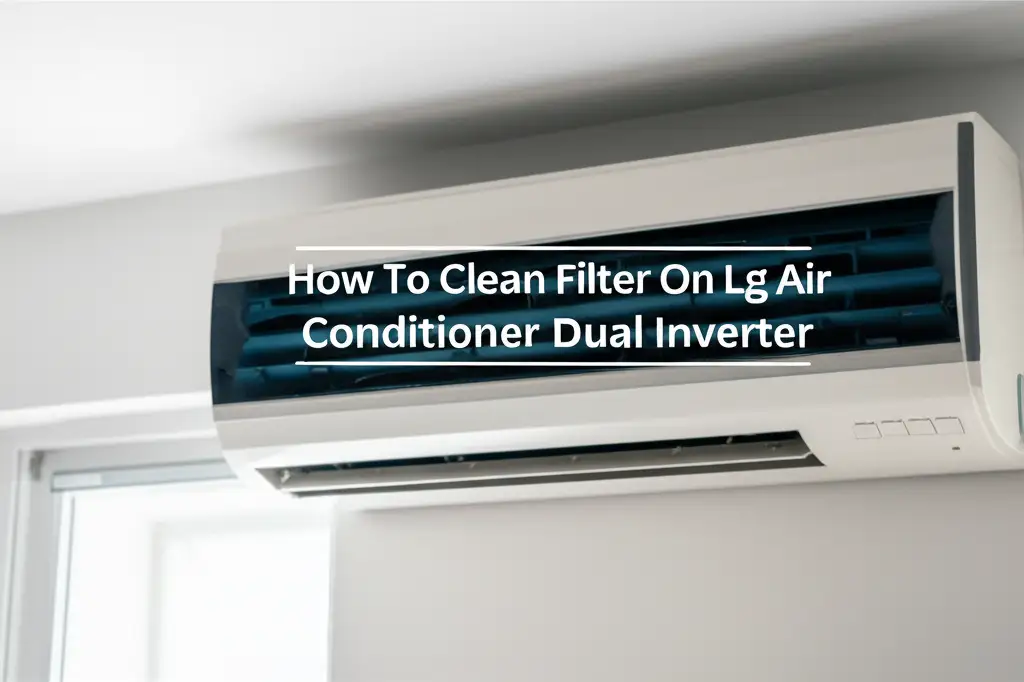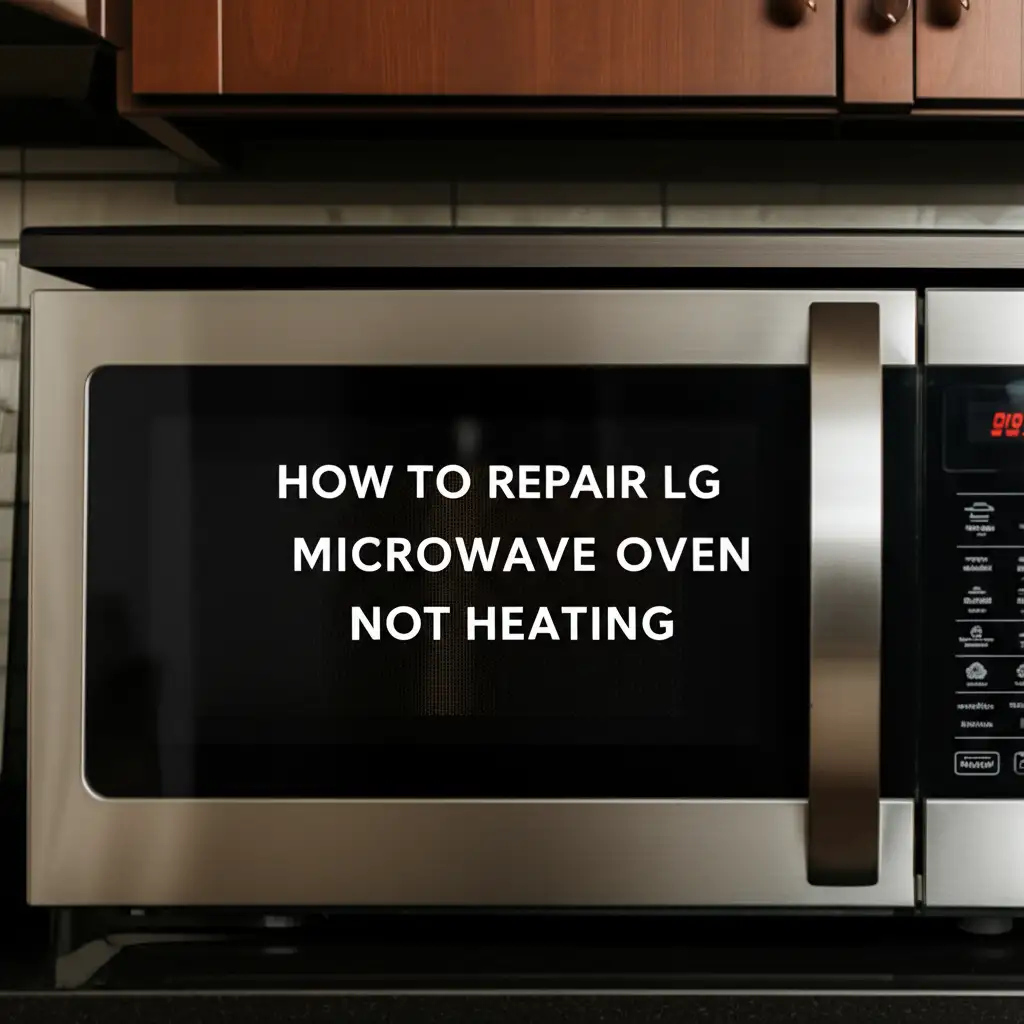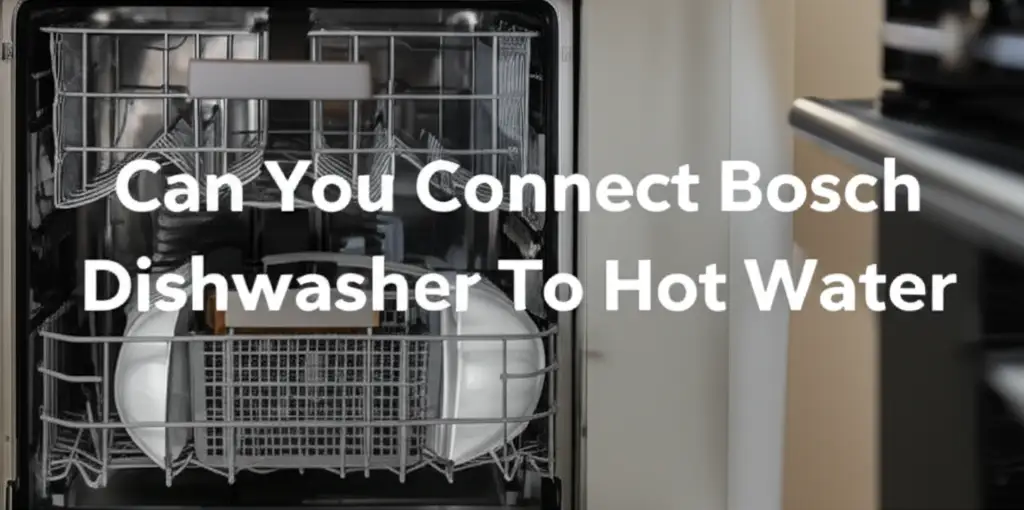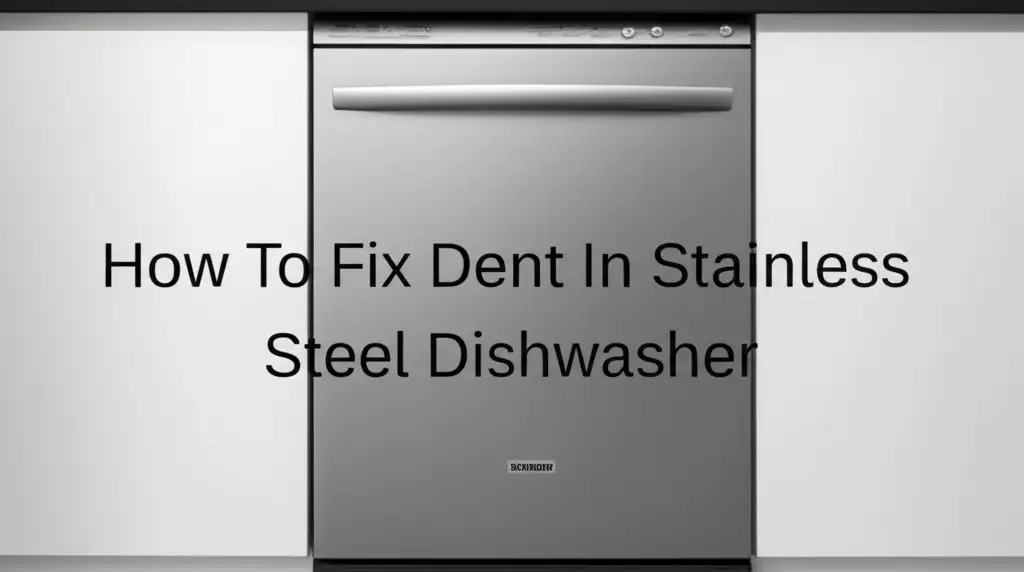· Katria Melrose · Home Appliances · 17 min read
Does Humidifier Only Run When Furnace Is On
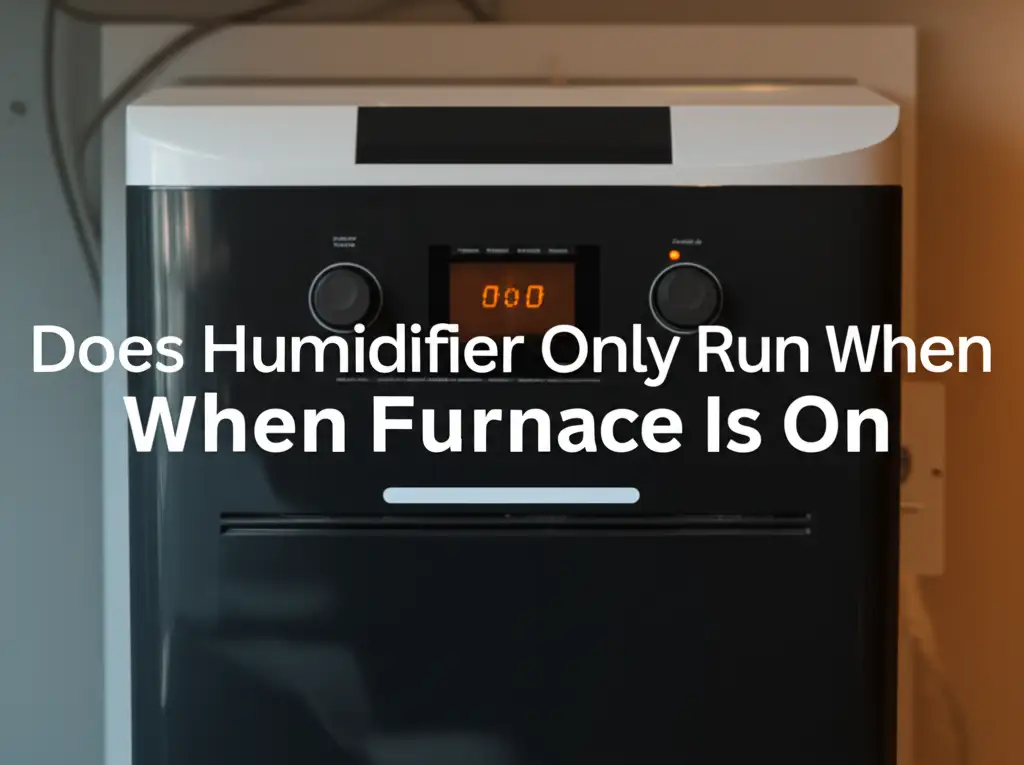
Does Humidifier Only Run When Furnace Is On?
Winter air can feel incredibly dry. Your skin might feel itchy, your throat scratchy, and static electricity seems to be everywhere. Many people turn to whole-house humidifiers to combat these common issues. These systems integrate directly with your home’s heating, ventilation, and air conditioning (HVAC) setup. This integration often leads to a common question: “Does humidifier only run when furnace is on?” It’s a valid query, given how intertwined these systems appear.
Understanding the relationship between your humidifier and furnace is important for effective humidity control and energy use. Some humidifiers do indeed rely on your furnace’s operation. Others, however, can function more independently. This article will explore the different types of whole-house humidifiers. We will explain how each type operates, detailing its connection (or lack thereof) to your furnace. You will learn about humidistats and their role in managing your home’s air quality. By the end, you will know exactly when your humidifier should be running and how to keep it working best.
Takeaway
- Bypass humidifiers typically require the furnace fan to be running, often when the furnace is actively heating.
- Fan-powered humidifiers can operate more independently, sometimes needing only the fan, or even running without the furnace for some models.
- Steam humidifiers are the most independent type, generating their own heat and running even when the furnace is off.
- A humidistat controls all whole-house humidifiers, sensing humidity levels and activating the unit as needed.
- Regular maintenance is crucial for efficient and effective humidifier operation.
A Clear Answer to Your Question
No, a whole-house humidifier does not always only run when your furnace is on. Its operation depends on the humidifier type. Bypass humidifiers usually need the furnace fan to distribute moisture. Fan-powered humidifiers offer more independence, often only needing the fan. Steam humidifiers generate their own heat, allowing them to run anytime the humidistat calls for humidity.
Understanding Whole-House Humidifiers
Whole-house humidifiers are appliances that add moisture to the air throughout your entire home. Unlike portable units, these systems connect directly to your home’s HVAC ductwork. They work in conjunction with your heating and cooling system to distribute humidified air. This provides consistent humidity levels in every room. Installing one of these units can significantly improve indoor air quality. It helps alleviate dry skin, static shock, and cracked wood furniture.
These humidifiers are designed for long-term comfort and convenience. They integrate seamlessly into your existing setup, usually near the furnace. Water from your home’s supply line feeds the humidifier. The unit then processes this water to create water vapor or mist. This moisture then enters your home’s air circulation system. The controlled addition of moisture prevents many common winter ailments. It also protects your home’s structure and contents from drying out.
Choosing a whole-house humidifier means less hassle than filling small portable units. You set your desired humidity level once, and the system handles the rest. This automation ensures a stable and comfortable indoor environment. It also reduces the risk of mold growth from over-humidification if set correctly. Understanding how these systems integrate with your furnace is key. It helps you manage your indoor climate effectively.
How Bypass Humidifiers Work with Your Furnace
Bypass humidifiers are the most common type of whole-house humidifier. They earn their name because they “bypass” a portion of the warm air from the furnace. This design means they have a direct reliance on your furnace’s operation. I often explain to homeowners that these units are quite simple in their mechanism. They do not have their own fan to push air. Instead, they use the pressure difference created by your furnace’s blower.
Here is how a typical bypass humidifier functions:
- A duct connects the humidifier to both the supply and return air plenums of your furnace.
- When the humidistat calls for humidity, a small damper opens. This allows air to flow through the humidifier.
- Warm air from the supply plenum is diverted through the humidifier. It passes over a water-soaked pad or evaporator panel.
- As the air moves over the wet pad, it picks up moisture.
- This now-humidified air returns to the cold air return plenum. From there, it mixes with the dry air entering the furnace.
- The furnace’s main blower then circulates this humidified air throughout your home.
Because bypass humidifiers rely on the furnace’s blower to move air across the water pad, they usually only run when the furnace fan is active. This typically means when your furnace is heating your home. However, some thermostats allow you to set your furnace fan to “on” instead of “auto.” This can allow the humidifier to run and add moisture even without the furnace actively heating. This specific mode is useful if you need humidity without extra heat. It’s important to remember that if the fan is not running, the bypass humidifier cannot effectively add moisture to your air.
Fan-Powered Humidifiers: Operating Independently
Fan-powered humidifiers offer a notable step up in independence compared to bypass models. These units incorporate their own built-in fan. This key feature allows them to operate with less direct reliance on your furnace’s blower. I find these models are excellent for homeowners who want more control over their humidity. They can often distribute moisture more widely and efficiently. This is because their fan actively pushes humidified air into the ductwork.
Here is how fan-powered humidifiers typically operate:
- Integrated Fan: Unlike bypass models, these humidifiers have an internal fan. This fan draws air directly from the furnace’s supply plenum.
- Moisture Generation: The air passes over a water-soaked pad, similar to a bypass model. The fan ensures a consistent flow of air over the pad.
- Distribution: The humidified air is then pushed back into the main ductwork. From there, your HVAC system distributes it throughout your home.
- Independent Operation: Because they have their own fan, these humidifiers can run even if your furnace is not actively heating. They only require the furnace’s main blower fan to be running to distribute the moist air. This means you can often set your furnace fan to “on” mode. This allows the humidifier to add moisture even when the heat is off. This capability makes them more flexible for maintaining comfort during milder days or when the heat cycles are infrequent.
The independent fan means fan-powered humidifiers can add more moisture to the air than bypass models. They are generally more effective in larger homes or in very dry climates. Their ability to run when the furnace is just circulating air offers great flexibility. This ensures your home maintains ideal humidity levels even when temperatures fluctuate. Always ensure proper maintenance of your humidifier, including regular cleaning of its components. Keeping your humidifier clean is vital for preventing mold and ensuring efficient operation.
Steam Humidifiers: Advanced Humidity Control
Steam humidifiers represent the most advanced and independent category of whole-house humidifiers. These units do not rely on your furnace’s fan or heat for their operation. Instead, they generate their own steam. This complete independence gives them precise control over indoor humidity levels. I often recommend steam humidifiers for homes with specific humidity needs or for those seeking the highest level of comfort. They are particularly effective in very dry conditions.
Here’s how steam humidifiers work:
- Internal Heating Element: Unlike other humidifiers, steam models contain an internal heating element. This element heats water to its boiling point.
- Steam Production: As the water boils, it produces pure, sterile steam.
- Direct Injection: This steam is then released directly into your HVAC ductwork. It mixes with the circulating air.
- Independence from Furnace: Because they create their own heat source, steam humidifiers can operate at any time. They do not need the furnace to be heating or even its fan to be running continuously. They only require the furnace fan to be on to distribute the steam throughout the home. This means if your home is too dry, the humidistat can activate the steam humidifier. It will add moisture without activating the heating cycle.
- Precise Control: Steam humidifiers offer very precise humidity control. They can quickly bring humidity levels up to the desired point. They are less affected by outside temperatures or the frequency of your furnace cycles.
This independence makes steam humidifiers the most versatile option. They can maintain comfort across a wider range of outdoor temperatures. They are also known for providing the purest form of humidification, as boiling water sterilizes it. While generally more expensive to install and operate due to their energy use, their benefits in terms of comfort and control are significant. Regular maintenance, such as cleaning the heating element and water reservoir, is crucial. This ensures long-term efficiency and prevents mineral buildup.
The Role of the Humidistat
The humidistat is the brain behind your whole-house humidifier’s operation. It is a control device that works much like a thermostat, but for humidity. Instead of sensing temperature, it senses the moisture level in the air. This device is crucial for knowing “does humidifier only run when furnace is on.” It dictates when your humidifier should activate and deactivate. Without a properly functioning humidistat, your humidifier cannot maintain optimal indoor humidity.
Here’s how a humidistat functions:
- Sensing Humidity: The humidistat contains a sensor that constantly measures the relative humidity (RH) in your home’s air.
- Set Point: You set your desired humidity level on the humidistat, typically between 35% and 50% during the heating season.
- Activation Signal: When the sensed humidity level falls below your set point, the humidistat sends a signal to your humidifier. This signal tells the humidifier to turn on.
- Deactivation Signal: Once the humidity level rises to or slightly above your set point, the humidistat signals the humidifier to turn off. This prevents over-humidification.
- Integration with HVAC: The humidistat often integrates with your furnace control board. This allows it to coordinate humidifier operation with the furnace fan. For bypass and fan-powered models, it ensures the humidifier only runs when the furnace fan is on to distribute moisture. For steam models, it can activate the humidifier even if the furnace is off, provided the furnace fan is running.
Proper humidistat placement is important. It should be in a central location, not near drafts or heat sources. This ensures it measures the true average humidity of your home. Adjusting your humidistat settings throughout the seasons is also a good practice. For example, lower humidity settings are recommended during very cold weather. This prevents condensation on windows and walls. Regular calibration checks can also ensure accuracy. If your humidifier is not working, checking the humidistat settings and function is a great first step.
Optimizing Humidifier Performance and Energy Use
Optimizing your humidifier’s performance involves more than just turning it on. It means ensuring it runs efficiently and effectively. This helps maintain a comfortable indoor environment without excessive energy consumption. I always advise homeowners to think about their humidifier settings and maintenance. This helps to get the most out of their system. Understanding how your humidifier affects energy use is also key.
Here are strategies to optimize performance and energy use:
- Ideal Humidity Levels: Aim for a relative humidity between 35% and 50% during the heating season. This range is comfortable for most people and prevents issues like mold growth or static electricity. Adjust downward in very cold weather to avoid window condensation.
- Humidistat Settings: Set your humidistat to the desired level. Do not set it too high, as this wastes energy and can cause condensation.
- Furnace Fan Settings: For bypass and fan-powered humidifiers, running your furnace fan in “auto” mode is typically more energy-efficient. The humidifier will only run when the furnace heats. If you need more consistent humidity, you can set the fan to “on,” but this uses more electricity for fan operation.
- Sealing Air Leaks: Prevent humidified air from escaping by sealing drafts around windows and doors. This reduces the load on your humidifier. It also makes your home more energy-efficient overall.
- Proper Sizing: Ensure your humidifier is correctly sized for your home. An undersized unit will struggle to keep up. An oversized unit might lead to over-humidification.
- Regular Maintenance: Keep your humidifier clean. A dirty humidifier can’t work well and might use more energy. This includes replacing water panels or cleaning reservoirs. Cleaning your humidifier regularly prevents mineral buildup and ensures fresh, clean moisture.
- Monitor Water Usage: If your humidifier is consuming an unusual amount of water, it might indicate an issue. A leak or a malfunctioning component could be the cause.
By paying attention to these details, you can ensure your humidifier provides comfortable air efficiently. This saves energy and extends the life of your unit.
Troubleshooting Common Humidifier Issues
Even with proper installation and settings, whole-house humidifiers can encounter issues. Understanding common problems helps you decide if you need professional help or if it is a simple fix. I have seen many situations where a quick check saves a service call. Knowing what to look for makes you a more informed homeowner.
Here are some common humidifier issues and steps to troubleshoot them:
- Humidifier Not Turning On:
- Check Humidistat Settings: Is the humidistat set lower than the current humidity level? Turn it up.
- Power Supply: Ensure the humidifier has power. Check circuit breakers.
- Water Supply: Is the water supply valve to the humidifier open? Make sure water is flowing.
- Water Panel/Pad: Is the water panel or evaporator pad properly installed and not clogged? A dry or improperly seated pad can prevent operation.
- Damper (Bypass Models): Is the bypass damper open? If it is closed, air cannot flow through the humidifier.
- Furnace Fan: For bypass and fan-powered models, is the furnace fan running? The humidifier needs airflow to operate. A dirty furnace filter can restrict airflow, impacting humidifier performance.
- Not Enough Humidity Being Added:
- Humidistat Setting: Is the set point high enough?
- Water Panel/Pad: Is the water panel old, mineralized, or dirty? Replace it annually or more often as needed. Mineral buildup prevents proper water absorption.
- Water Flow: Is the water supply line kinked or partially blocked? Check for clogs in the water feed tube or solenoid valve.
- Air Leaks: Are there significant drafts or air leaks in your home? Seal them up to prevent humidified air from escaping.
- System Sizing: Is the humidifier properly sized for your home’s square footage and airtightness?
- Too Much Humidity/Condensation:
- Humidistat Setting: Is the humidistat set too high, especially when outdoor temperatures drop significantly? Lower the setting to prevent condensation on windows.
- Damper (Bypass Models): Is the bypass damper fully closed when the humidifier is off? An improperly closed damper can allow some air to flow through.
- Ventilation: Ensure proper ventilation in bathrooms and kitchens to remove excess moisture from those areas.
- Leaking Water:
- Drain Line: Is the drain line clogged or kinked? Clear any blockages. This is similar to a furnace condensate line. Check your furnace condensate drain line for inspiration on clearing humidifier drain issues.
- Water Panel/Tray: Is the water panel seated correctly? Is the humidifier’s water distribution tray overflowing? This may indicate a clog.
- Loose Connections: Check all water connections for tightness.
Addressing these common issues can help restore your humidifier’s function. If these steps do not resolve the problem, calling a qualified HVAC technician is the next best step. They can diagnose more complex issues and perform necessary repairs.
Maintenance is Key for Optimal Operation
Regular maintenance is crucial for your whole-house humidifier. It ensures efficiency, extends its lifespan, and prevents problems. Neglecting maintenance can lead to reduced performance, water waste, and even potential health issues from mold or bacteria. I always tell homeowners that a small amount of effort now saves a lot of headaches later.
Here are the essential maintenance tasks for your whole-house humidifier:
- Replace the Water Panel (Evaporator Pad):
- Frequency: This is the most critical maintenance item. Replace it at least once per heating season. In areas with hard water, you may need to replace it every 1-2 months.
- Why: Mineral buildup on the pad prevents proper water absorption and evaporation. A clogged pad reduces efficiency and can cause the unit to work harder.
- How: Turn off the water supply and power to the humidifier. Remove the old pad and insert a new one according to the manufacturer’s instructions.
- Clean the Humidifier Components:
- Frequency: At least once a year, preferably before the heating season begins.
- Components: Clean the water distribution tray, reservoir, and any other removable parts.
- Method: Use a solution of warm water and white vinegar to dissolve mineral deposits. White vinegar is a great natural cleaner for humidifiers. Scrub gently with a soft brush. Rinse thoroughly to remove all vinegar residue.
- Inspect Water Lines and Drain Line:
- Check for Leaks: Look for any signs of leaks or drips around the water supply line connections.
- Clear Drain Line: Ensure the drain line (if applicable to your model) is clear of obstructions. A clogged drain can lead to water backup and leaks.
- Check the Solenoid Valve:
- Function: This valve controls the water flow into the humidifier. Ensure it opens and closes properly.
- Cleanliness: Mineral deposits can sometimes cause the valve to stick. Clean around it if necessary.
- Inspect the Humidistat:
- Accuracy: Periodically check that your humidistat is functioning correctly and accurately sensing humidity levels.
- Location: Ensure it remains in a good, central location away from drafts.
- Turn Off During Off-Season:
- Water and Power: At the end of the heating season, turn off the water supply to the humidifier and turn off its power.
- Empty Water: For bypass models, ensure the bypass damper is closed. This prevents air from needlessly flowing through the dry unit. This step helps prevent mold and extends the life of the water panel.
By following these maintenance steps, you keep your humidifier in top condition. This ensures it provides comfortable, clean air for your home throughout the dry season. It also helps answer the question “does humidifier only run when furnace is on” by making sure it runs only when it should, and effectively.
Frequently Asked Questions (FAQ)
1. Does a humidifier run all the time in winter?
No, a whole-house humidifier does not run all the time. It operates based on your humidistat settings. The humidistat senses your home’s humidity level. When the humidity drops below your set point, the humidifier turns on. Once the desired level is reached, it shuts off.
2. Can I run my humidifier without the furnace running?
Yes, depending on the humidifier type. Bypass humidifiers generally need the furnace fan to be active. Fan-powered humidifiers also rely on the furnace fan but have their own fan. Steam humidifiers are the most independent; they create their own heat and only need the furnace fan for distribution, meaning they can humidify even if the furnace isn’t heating.
3. What is the ideal humidity level for a home in winter?
The ideal indoor humidity level during winter is typically between 35% and 50% relative humidity. This range is comfortable for most people and helps prevent dry skin, static electricity, and cracked wood. In very cold weather, you might need to lower it to avoid condensation on windows.
4. How often should I replace my humidifier’s water panel?
You should replace your humidifier’s water panel (also called an evaporator pad) at least once per heating season. If you have hard water, you might need to replace it more frequently, perhaps every 1-2 months. A clogged or mineralized pad significantly reduces the humidifier’s efficiency.
5. Why is my whole-house humidifier not putting out humidity?
Several reasons can cause this. Check if the humidistat is set too low. Ensure the water supply valve is open and the water line is not kinked. The water panel might be clogged with mineral buildup and needs replacement. Also, confirm that your furnace fan is running, as most humidifiers require airflow.
6. Do humidifiers increase heating costs?
A humidifier itself uses a small amount of electricity and water. Steam humidifiers use more electricity because they heat water. However, by adding moisture to the air, humidifiers can make your home feel warmer at lower temperatures. This allows you to set your thermostat a few degrees lower, potentially offsetting the humidifier’s energy use and saving on heating costs.
Conclusion
Understanding the intricate dance between your whole-house humidifier and your furnace is important for maintaining a comfortable and healthy home environment. We have explored the primary types of whole-house humidifiers: bypass, fan-powered, and steam models. Each type has a unique way of interacting with your HVAC system. Bypass humidifiers are heavily reliant on your furnace fan. Fan-powered units offer more independence. Steam humidifiers are the most autonomous, generating their own heat. This directly answers the question: “Does humidifier only run when furnace is on?” The answer is “it depends.”
The humidistat serves as the vital controller, sensing humidity levels and signaling your humidifier to operate. This ensures precise humidity management. Regular maintenance, including replacing water panels and cleaning components, is not just a suggestion; it’s a necessity for efficient, long-lasting performance.
By adhering to recommended humidity levels and addressing common issues promptly, you can maximize your humidifier’s benefits. This will create a consistent, comfortable atmosphere throughout your home. Take control of your indoor air quality today by understanding and properly maintaining your whole-house humidifier.


